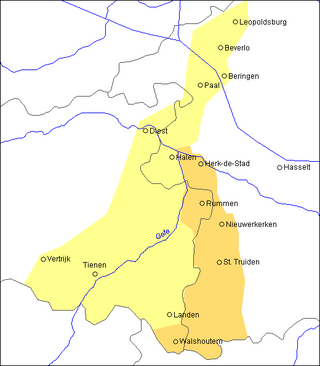Related Research Articles
A fricative is a consonant produced by forcing air through a narrow channel made by placing two articulators close together. These may be the lower lip against the upper teeth, in the case of ; the back of the tongue against the soft palate in the case of German ; or the side of the tongue against the molars, in the case of Welsh. This turbulent airflow is called frication.
In phonetics, rhotic consonants, or "R-like" sounds, are liquid consonants that are traditionally represented orthographically by symbols derived from the Greek letter rho, including ⟨R⟩, ⟨r⟩ in the Latin script and ⟨Р⟩, ⟨p⟩ in the Cyrillic script. They are transcribed in the International Phonetic Alphabet by upper- or lower-case variants of Roman ⟨R⟩, ⟨r⟩: ⟨r⟩, ⟨ɾ⟩, ⟨ɹ⟩, ⟨ɻ⟩, ⟨ʀ⟩, ⟨ʁ⟩, ⟨ɽ⟩, and ⟨ɺ⟩ as well as by the lower-case turned Roman ⟨a⟩ combined with the "non-syllabic" diacritic, that is ⟨ɐ̯⟩.

Pharyngealization is a secondary articulation of consonants or vowels by which the pharynx or epiglottis is constricted during the articulation of the sound.

A digraph or digram is a pair of characters used in the orthography of a language to write either a single phoneme, or a sequence of phonemes that does not correspond to the normal values of the two characters combined.
The phonology of Standard German is the standard pronunciation or accent of the German language. It deals with current phonology and phonetics as well as with historical developments thereof as well as the geographical variants and the influence of German dialects.

Guttural R is the phenomenon whereby a rhotic consonant is produced in the back of the vocal tract rather than in the front portion thereof and thus as a guttural consonant. Speakers of languages with guttural R typically regard guttural and coronal rhotics to be alternative pronunciations of the same phoneme, despite articulatory differences. Similar consonants are found in other parts of the world, but they often have little to no cultural association or interchangeability with coronal rhotics and are (perhaps) not rhotics at all.
Swedish has a large vowel inventory, with nine vowels distinguished in quality and to some degree quantity, making 18 vowel phonemes in most dialects. Swedish pronunciation of most consonants is similar to that of other Germanic languages. Another notable feature is the pitch accent, which is not found in most European languages.
The sound system of Norwegian resembles that of Swedish. There is considerable variation among the dialects, and all pronunciations are considered by official policy to be equally correct – there is no official spoken standard, although it can be said that Eastern Norwegian Bokmål speech has an unofficial spoken standard, called Urban East Norwegian or Standard East Norwegian, loosely based on the speech of the literate classes of the Oslo area. This variant is the most common one taught to foreign students.
East Flemish is a collective term for the two easternmost subdivisions of the so-called Flemish dialects, native to the southwest of the Dutch language area, which also include West Flemish. Their position between West Flemish and Brabantian has caused East Flemish dialects to be grouped with the latter as well. They are spoken mainly in the province of East Flanders and a narrow strip in the southeast of West Flanders in Belgium and eastern Zeelandic Flanders in the Netherlands. Even though the dialects of the Dender area are often discussed together with the East Flemish dialects because of their location, the latter are actually South Brabantian.
The following is a list of common non-native pronunciations that English speakers make when trying to speak foreign languages. Many of these are due to transfer of phonological rules from English to the new language as well as differences in grammar and syntax that they encounter.
Dutch phonology is similar to that of other West Germanic languages, especially Afrikaans and West Frisian.
The phonology of Faroese has an inventory similar to the closely related Icelandic language, but markedly different processes differentiate the two. Similarities include an aspiration contrast in stop consonants, the retention of front rounded vowels and vowel quality changes instead of vowel length distinctions.
Afrikaans has a similar phonology to other West Germanic languages, especially Dutch.
This article covers the phonology of the Orsmaal-Gussenhoven dialect, a variety of Getelands spoken in Orsmaal-Gussenhoven, a village in the Linter municipality.
The Hague dialect is a dialect of Dutch mostly spoken in The Hague. It differs from Standard Dutch almost exclusively in pronunciation.
Hasselt dialect or Hasselt Limburgish is the city dialect and variant of Limburgish spoken in the Belgian city of Hasselt alongside the Dutch language. All of its speakers are bilingual with standard Dutch.
The pronunciation of the phoneme in the English language has many variations in different dialects.

Getelands or West Getelands is a South Brabantian dialect spoken in the eastern part of Flemish Brabant as well as the western part of Limburg in Belgium. It is a transitional dialect between South Brabantian and West Limburgish.
References
- 1 2 3 4 5 6 Hinskens & Taeldeman (2013), p. 167.
- 1 2 Vandekerckhove (2010), p. 326.
- ↑ Taeldeman (2005), p. 277.
- 1 2 3 Sebregts (2014), p. 90.